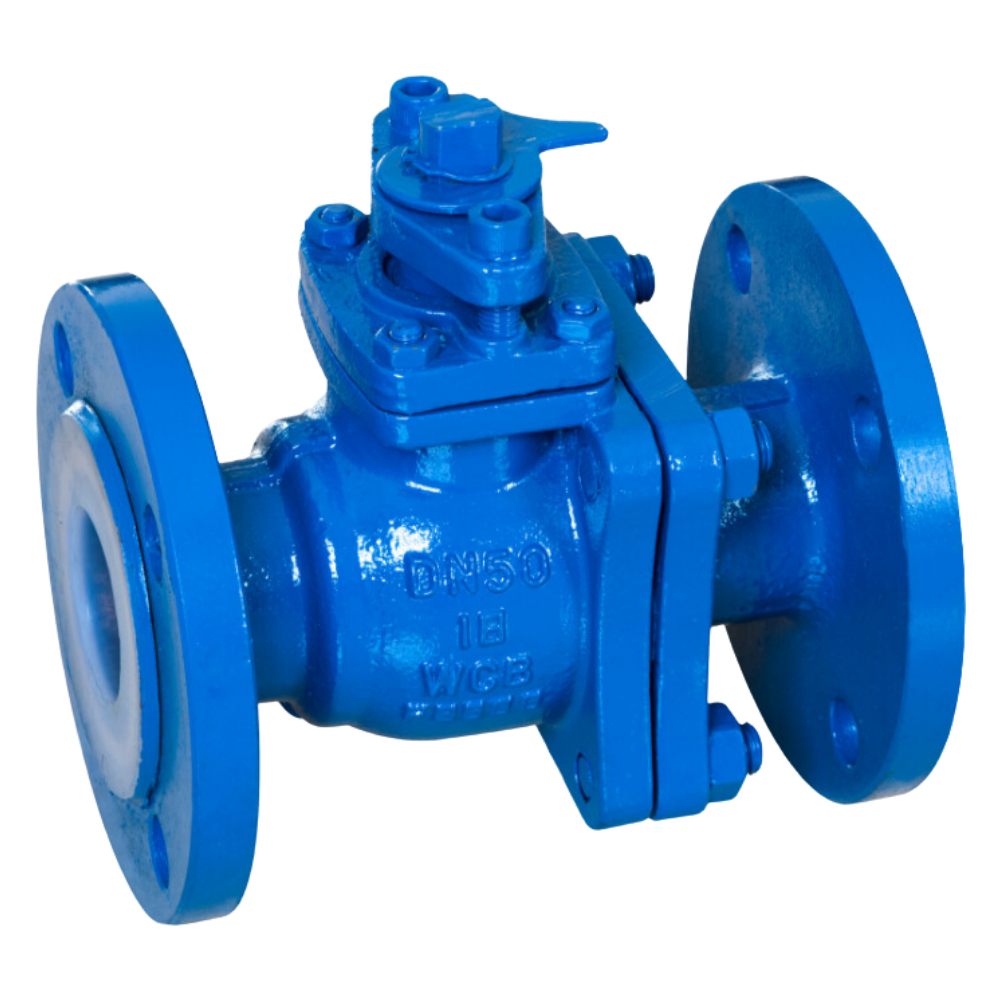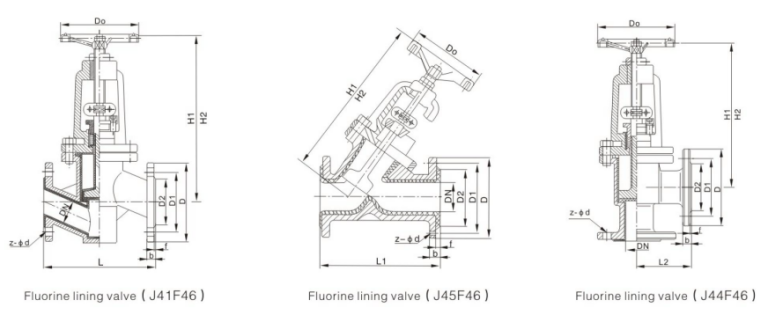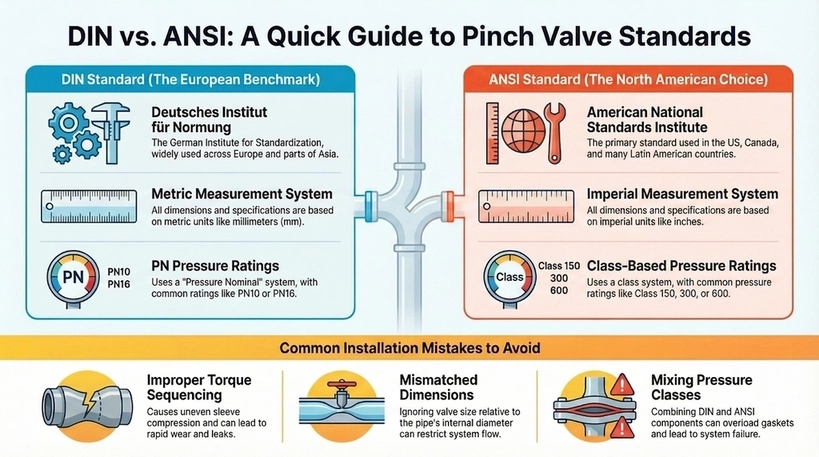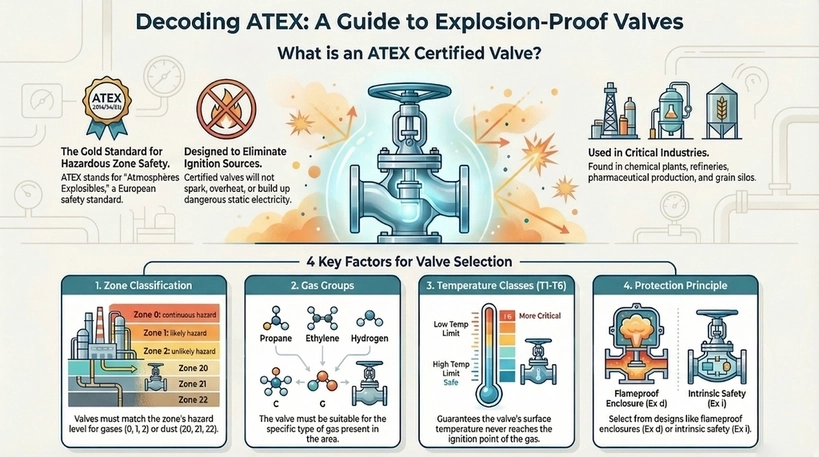

Fluid control in industries is an essential part of larger operations. And this control is provided by valves. There are plenty of differentiable industrial valves such as the ball valve, gate valve or the butterfly valve. And each of these valves have their own differences and pros. Industries like those with chemical plants or Oil/Gas industries are seen to use valves lined with fluoropolymers. These fluoropolymer linings prevent chemicals from damaging the internal body of valves. Simultaneously, these linings also allow for ultra-pure handling. Continue on to learn about the different types of corrosion resistant valves.

Most industrial used valves are ball valves. These valves use a ball to open/close allowing or blocking fluid flow. The external hinge on the ball valve is connected to the ball which blocks flow. And this ball has a passageway going through it. When the valve is opened, it revolves the ball making the passage face the fluid allowing flow.
Many industries have ball valves lined with PFA. PFA Lined ball valves are chemically inert, making them apt for handling corrosive fluids. Additionally, the PFA lining adds flexibility and greater wear resistance.
While valves are usually made to allow/block fluid flow, butterfly valves are more apt for regulating it. But their control properties aren’t as good as other valves. These valves follow a 90 degree opening/closing rotation. Fluid flow is regulated if the hinge is left anywhere in between those 90 degrees.
Most industries make use of PTFE Lined butterfly valves. The internal PTFE lining makes the valve apt for handling corrosive fluids like strong acids or bases. Additionally the lining also provides great wear resistance and lowers the friction generated.
Check valves are also termed non return valves. These valves are designed to allow unidirectional fluid flow while also blocking back flow. These valves can prevent backflow because their opening/closing is dependent on fluid flow. When fluid flow is increased such that the pressure at the inlet is greater than the pressure at the outlet, the valve opens. If fluid flow suddenly decreases or flows the opposite way, the valve closes due to changing pressures.
Fluorinated ethylene propylene valves are designed to carry inorganic solvents, both concentrated or dilute. This fluoropolymer lining adds extra toughness and radiation resistance.

Gate valves are solely made to allow or block fluid flow. These valves cannot operate under conditions needed to control the proportion of fluid flow. To make these valves work, a “gate” is lifted once the external hinge is moved. In turn, this allows fluid flow. PVDF Lined gate valves are designed to handle higher temperatures and stronger/more corrosive fluids.
Like gate valves, ETFE Lined globe valves control fluid flow by the linear motion of the disc. These valves are shaped like a globe which gives them their name. Globe valves are made to minimize leaks and control flow by moving a disc up/down. The ETFE lined globe valves are generally found in Oil/Gas factories. And this is because of its resistance to extreme temperature conditions and the petroleum resistance.

The additional internal valve lining of fluoropolymers provide these benefits:
All fluorine resistant valves has their own pros/cons:
Fluoropolymer Lined Valves or High Purity Valves are found in these operations:
LIANKE Valve was founded in 1982. And ever since it has become a leading semiconductor industry valves manufacturer. At LIANKE, customers can find a wide variety of fluorine lined diaphragm valves. When buying from LIANKE Valve, you’ll find valves that are compliant with various industry standards such as CE, API, ISO, EAC and TS Certifications. Additionally, each valve is inspected under several tests like the water pressure test and chemical composition test to ensure that the quality of these valves is not compromised.
If you’re looking to get yourself a fluoropolymer lined valve, the variety is never ending. You’ll be able to find multiple fluorine lined butterfly valves, globe valves, gate valves and so much more. Head over and get a quote for yourself in just 24 hours!
Fluoropolymer Linings are advantageous for industrial valves because these internal linings can handle a wide range of concentrated acids. Additionally, the internal fluoropolymer lining provides greater temperature resistance as well as added durability. The internal layer prevents contamination by preventing inner valve body contact with the fluid.
The main lining materials used in fluoropolymer lined valves are FEP, PFA and PTFE. You will also find industrial valves being lined with PVDF and ETFE layers.
A Comprehensive Guide to the Most Common Types of Industrial Valves (dombor.com)
6 Types of Fluoropolymer Coatings You Should Consider (superiorshotpeening.com)
A Complete Guide to Fluoropolymers – National Plastics and Seals, Inc.
Fluoropolymer Linings Explained: What They are, When to Use Them – Knight Materials

High pressure pinch valves, like PN16 pinch valve and class 150 pinch valve designs, involve a rugged and heavy-duty pinching mechanism in positioning the sleeve, resulting in an almost accurate and measurable flow of media. This kind of valve is popular and commonly used for long distance operations in mining tailings lines or oil sands, […]

Understanding pinch valve dimensions and flanges ensures seamless integration into piping systems, particularly when choosing between DIN vs ANSI. The two are different but commonly used standards by organizations in engineering, manufacturing, and product design. DIN was developed in Germany but widely adopted across Europe and parts of Asia. Meanwhile, ANSI standards, which originate from […]

Selecting the appropriate explosion proof valve is essential for safety in industries that pose explosion risks. ATEX certified valves guarantee compliance with European standards, preventing ignition sources from heat, sparks, or static electricity. This blog explores key factors for choosing ATEX certified explosion proof valves that ensure overall operational safety, highlighting the entailed regulations and […]

When handling abrasive or viscous media in industrial processes, the type of valve used can heavily affect the performance, efficiency, and overall user experience. In relation to this, two of the most common valve options are pinch and diaphragm valves. In this blog, we delve into the pinch valve vs diaphragm valve discussion, analyzing flow […]



